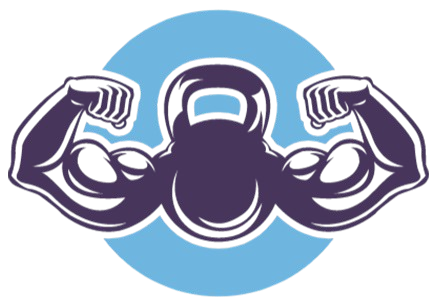Fitpro Income
Keeping Track Of Personal Training Sessions The Easy Way
Your marketing and sales skills are on fire, so now you have a fully booked diary, but how are you going to keep track of all your personal training sessions?
I was a very busy PT working in the middle of the City Of London, with back to back sessions throughout the day, so it was seriously important that I kept track of what I was doing.
I developed some pretty easy techniques to make sure I was constantly on top of all my clients’ sessions and today I’m going to share them with you.
Sound good?
Let’s go…
Being busy is great, it means you’re making a ton of cash and you’re retaining your clients well.
Keeping track of your clients sessions is vital, as if you don’t organise your diary properly and keep track of the progress they are making, you may start double-booking yourself and finding your clients making little to no progress.
It won’t take long for that awesome list of clients you have to start getting smaller and smaller unless you prevent issues like this, so let’s get cracking with top ways to keep track of your personal training sessions.

Top ways to keep track of your personal training sessions
- Confirm EVERY booking
- Write your clients programs months in advance
- Create an exercise database
- Set reminders on your phone
- Make your client sign for every session
- Mark the exercise program cards after each session
- Use apps
1. Confirm EVERY booking
Confirming that your client is actually coming to a session might seem like common sense, but it’s something that almost every PT neglects to do, opting to assume that each and every session will turn up on time instead.
Terrible, terrible idea!
Instead, message your client the night before to make sure they are still coming to the session, if not, you will have plenty of time to book in a replacement session or book in an hour for your own admin work.
Don’t be one of those PT’s you see with a mobile in their hand walking around the gym reception trying to work out what’s going on with their day now that they’ve had three back to back cancellations.
Plan ahead and don’t waste any time in the gym, remember, if you are self-employed, you are paying to be there, so make the most of it.
2. Write your clients’ programs months in advance
This tip is a lifesaver and will save you so much hassle and stress.
As soon as you have discussed your clients’ goals and they have paid you for their first block of sessions (or preferably signed up to monthly sessions with you), write up all of their workout programmes for the next six months.
Even if you are not 100% certain they will stay with you that long, do it anyway.
Writing up their sessions months in advance takes away all the stress of having to write something up on the day of the session, or god forbid, making it up as you go along.
Some PT’s prefer to make up their workouts as they go along, but then how can you show progress to your clients if they ask you what they were originally bench-pressing when they first started with you? Can you honestly say you would be able to remember? I know I couldn’t so I wrote it all down and had proof of everything.
As soon as you get through one phase of the workout, you can move straight onto the next that you have already written up. No hassle, no stress.
3. Create an exercise database
Writing programmes seems easy, I mean you already know tons of exercises you could pluck from your brain right now, right?
Thing is, once you’ve written out a few workouts, your brain will probably go completely blank like mine used to, which will leave you sitting there at a blank exercise card getting more and more frustrated with yourself.
Instead, why not take a weekend out to write up a massive database of every exercise you can think of, then start researching online databases for new exercises and routines you can use?
Once you have all your exercises, categorize them into the different training styles like weight loss, functional training, strength training etc. This way, when you have a new client that needs a few months of training programmes written up, you can pick your favourite exercises and get them written up in minutes rather than hours.
4. Set reminders on your phone
I have, the worst memory you could possibly imagine, and there was nothing worse for me than being halfway through a session with a client, only to see my next client waiting at the reception.
Double booking yourself sucks! And it’s not a problem at all when you are quiet, but when you start to really rack up those clients and get seriously busy, it’s easy to forget who is coming at what times.
Instead, set up your phone for the day with all your clients you will be seeing that day and set an alert to go off fifteen minutes before your next client.
This will constantly keep you updated with who is coming at what times, but also lets you know when you need to start wrapping up the session you are currently taking.
5. Make them sign your personal training client tracking sheet
You see those personal trainers that finish stretching their clients, shake their hands, and then walk away? Yeah, those are the guys who will have no idea how many sessions their clients have left on the block they have bought.
They are also the type of trainer that would find they have been training their clients for free for the past three sessions because they already finished their block ages ago.
At the end of each session, have your client sign for it.
This benefits you in several ways: firstly it lets both you and the client know exactly how many sessions they have left in their block, which actually makes upselling sessions much easier as the client already knows they are coming towards the end and will need to purchase more.
And secondly, it acts as proof that the session has been completed. Once you get super busy, it’s very easy for people to try to pull the wool over your eyes and say that they’ve only done 8 sessions instead of 10, this way you have their signature proving all sessions have been completed.
6. Mark the exercise program cards after each session
This tip’s so simple it’s almost stupid, but it really works and takes away any hassle of knowing how far your clients are through their training programs.
Each training programme you write up should last for at least 4 to 6 weeks in order for decent progress to be made.
We are talking today about being busy, and when you are busy, it’s really hard to keep track of when you started each training programme with each client. So, each and every time your client signs off for a session, just put a small mark on the programme card if you are using a physical one or add numbers if you are using your phone instead.
This way, once they have got a certain amount of marks on their card, you will know that after the next session you will need to move them onto the next programme you have written up.
Simple, but really effective.
7. Use client tracking software
I know most people aren’t as old school as me, and most of your reading this wouldn’t even dream of using a physical programme because you probably use your mobile for most of your training and organisation.
So, why not take advantage of all your phones features by using apps that can help you organise your day and run your whole personal training business for you?
Apps like MyFitnessPal take away all the stress and hassle of having to work out how many calories your clients are eating each day. I actually used to read through a book with the calorie content of various foods and have to manually add together the amounts (man I’m old).
An app like JEFIT will help you design and write up hundreds of workout programmes for your clients in no time at all.
They certainly can help, but I personally would rather stick to the seriously old school method of using exercise programme cards and a clipboard.
I know some of the other trainers I worked with, thought of it as being pretty geeky, but I prided myself in being exceptionally professional, and I think my attention to detail by writing weight progress etc on my cards showed this.
Conclusion
Keeping track of your sessions as a personal trainer isn’t difficult, however, it’s seriously important!
Take a few of these examples and see how they affect your day to day work as a PT. I am really confident you will find your organisation becomes a whole lot easier and you will have no problem keeping track of your clients’ sessions and progress.
I’ve done it, they worked for me, so now they can work for you.
Go get ’em!
